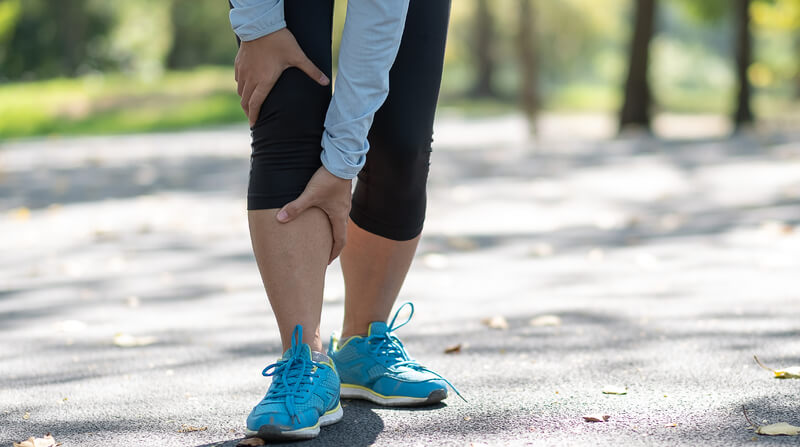Leg pain during activity may be a sign of a narrowing in your arteries.
 Do your legs hurt when you walk but then feel okay once you are sitting down? Have you felt numbness or weakness in your legs or feet? Do you notice color changes on the skin of your legs or have sores that heal slowly? All of these symptoms may be a sign of peripheral artery disease, also referred to as PAD.
Do your legs hurt when you walk but then feel okay once you are sitting down? Have you felt numbness or weakness in your legs or feet? Do you notice color changes on the skin of your legs or have sores that heal slowly? All of these symptoms may be a sign of peripheral artery disease, also referred to as PAD.
Peripheral artery disease is more common than you think. It occurs when there is a narrowing of the arteries that supply blood to your extremities – most often your legs, but sometimes your arms. The cause of the condition is similar to coronary artery disease, which is a narrowing of the arteries that supply blood to the heart. The narrowing occurs due to a build-up of fatty deposits in the arteries, referred to as atherosclerosis, which reduces blood flow to the area.
PAD Symptoms
Because narrowed arteries reduce blood flow, you may feel symptoms such as leg pain when walking. There are other symptoms you may also feel if you have PAD, although many people only have mild symptoms, at least at first. Some people may feel no symptoms at all.
If you have symptoms of PAD, the most common ones include:
- Muscle pain or cramping in your calf, thigh or hip when exercising or immediately after exercising that stops when you rest
- Coldness, numbness or weakness in your foot or leg
- Skin color changes or shiny skin on your leg
- Sores on the foot or leg that won't heal
- Slow hair growth on the legs and nail growth on the toes
- A weak pulse in the leg or foot
Although PAD occurs most often in the legs, it can also occur in the arms. If arteries are narrowed in the arms, you'll have similar symptoms, such as muscle pain and cramping when doing tasks using your hands and arms, such as writing, knitting or typing.
PAD Risk Factors
PAD has many of the same risk factors as coronary artery disease. Your risk of developing this condition increases if:
- You smoke
- You have diabetes
- You have high blood pressure
- You have high cholesterol
- You have high levels of homocysteine, an amino acid that increases the risk for coronary artery disease
- You are obese (BMI over 30)
- You are older, especially if you are over age 65
- You have a family history of PAD, heart disease or stroke
While you can't control all risk factors, following a healthy lifestyle may reduce your risk of developing PAD. This includes not smoking, maintaining a healthy body weight, following a healthy diet, exercising regularly and managing blood sugar, blood pressure and cholesterol.
Diagnosing PAD
If you suspect you have PAD, talk to your doctor. Several tests can be done to diagnose whether you have this condition. One common and painless diagnostic tool is the ankle-brachial index (ABI) test, which compares blood pressure in the ankle with blood pressure in the arm before and after walking on a treadmill. An ultrasound, x-rays, MRI or CT scan may also be done to look for blockages in the arteries.
Copyright 2024 © Baldwin Publishing, Inc. Health eCooks® is a registered trademark of Baldwin Publishing, Inc. Cook eKitchen™ is a designated trademark of Baldwin Publishing, Inc. Any duplication or distribution of the information contained herein without the express approval of Baldwin Publishing, Inc. is strictly prohibited.
Date Last Reviewed: July 16, 2024
Editorial Review: Andrea Cohen, Editorial Director, Baldwin Publishing, Inc. Contact Editor
Medical Review: Perry Pitkow, MD
Learn more about Baldwin Publishing Inc. editorial policy, privacy policy, ADA compliance and sponsorship policy.
No information provided by Baldwin Publishing, Inc. in any article is a substitute for medical advice or treatment for any medical condition. Baldwin Publishing, Inc. strongly suggests that you use this information in consultation with your doctor or other health professional. Use or viewing of any Baldwin Publishing, Inc. article signifies your understanding and agreement to the disclaimer and acceptance of these terms of use.
